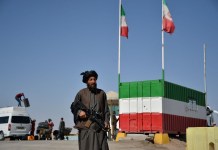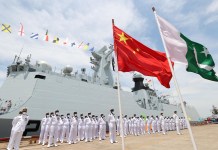India-US defence relations seem to have no limits. In a historic move, India will hold extensive tri-service military war games with the US involving their armies, navies, airforces and marines, said a statement at Indo-US 2+2 dialogue. EurAsian Times analyses the historic India-US deal.
- Russia Cites Indian, Turkish Examples to Fight Hollow US Threats
- How is Sri Lanka Balancing its Romance with India and China?
Until the agreements between India and the US that took place at 2+2 meeting, India did not hold such military exercises with any other country.
“Our joint exercises have acquired greater complexity and newer dimensions, both bilaterally and in wider formats. To enhance our synergies in this area, we have decided to carry out, for the first time, a tri-Services joint exercise with the United States off the eastern coast of India in 2019,” said defence ministers Nirmala Sitharaman.
India and the US also agreed to cross-post army officers between the US naval central command (NAVCENT) and, perhaps, the Indian naval western command.
In the US military scheme of the world, India falls under the Pacific Command area of responsibility of the country. But Pakistan and Afghanistan are categorized in the US Central Command area of responsibility.
But it is the planned tri-service exercise that could take the military-to-military relationship to a different plane. At present, the navies, air forces and armies of India and the US exercise separately. The naval Malabar is the largest of the exercises that successively involved aircraft carriers and submarines of both the countries.
“The Ministers reviewed the recent growth of bilateral engagements in support of maritime security and maritime domain awareness and committed to expand cooperation. Toward that end, the Ministers are committed to start exchanges between the U.S. Naval Forces Central Command (NAVCENT) and the Indian Navy, underscoring the importance of deepening their maritime cooperation in the western Indian Ocean,” said the joint statement.
As mentioned in the statement, New Delhi has cleared barriers to the transfer of military high-technology to India. For the US, this increases the possibility of military sales. For example, two US fighter aircraft, the F-16 Super Viper (Fighting Falcon) made by Lockheed Martin and the F/A-18 Super Hornet made by Boeing are battling with four others for an Indian Air Force order for 114 fighter jets.
“Acknowledging the unique role of technology in the India-U.S. defence partnership, the Ministers reaffirmed their commitment to continue to encourage and prioritize co-production and co-development projects through the Defense Technology and Trade Initiative,” the statement noted. Also, both the countries decided to increase intelligence-sharing for “bilateral counter-terrorism”.




